Dog Training Guide: Tips for Training Sessions

Even though dogs may seem like naughty children sometimes, their disruptive behaviors can strain your human-canine bond and impact your overall quality of life together. However, once fully equipped with our advice on dog training, we can build a harmonious relationship with our pets.
The right training sessions will help us teach them positive reinforcement techniques (carefully and kindly) and show how our society works and what we expect from them.
How Does Dog Training Work?
It’s well-known that an adult dog’s intelligence level is close to that of a two-year-old toddler. So, teaching canines certain behaviors resembles teaching young kids. The key principle is simple: encourage the desired behavior and ignore or redirect the unwanted one.
During the training process, a professional dog trainer offers their student something they like (food, belly rubs, or a toy) right after they perform the requested trick. If done consistently, your pet learns to associate the behavior they learned with positive outcomes and offers it to you on a cue.
Ignoring certain dog's behaviors, like jumping on people, works better. For many dogs, jumping on visitors is a way to get attention. So, your attention is, in fact, a reward the pet receives. If you remove the reward, the behavior will stop, too.
How to Train a Dog: The Basics
Canines learn through "operant" and "classical" conditioning. Both methods rely on the subject’s adaptability to a new environment and are essential to dog training approaches.
Recent discoveries in behavioral psychology suggest that to raise a happy confident and well behaved dog, you should always use positive reinforcement and avoid punishment.
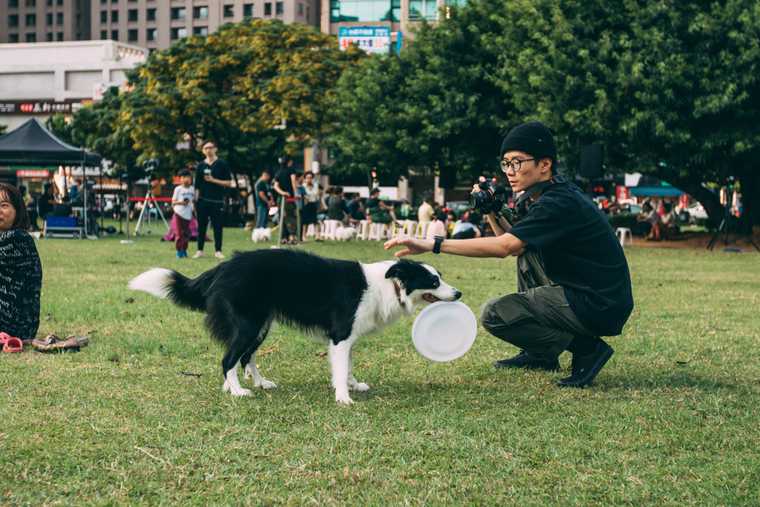
Communication and senses
Practical dog training hinges on clear communication and understanding your pet's senses and needs. You can use both to teach your dog the needed commands and adequately socialize a puppy.
Communication: Clear communication fosters faster and better learning. If your dog seems stubborn, it's likely a communication issue. Teaching cues or behaviors takes time and patience; raising your voice won't help.
Senses: Canines rely on their senses, especially smell and hearing. They interpret the world through scent, so allowing them to explore with their nose is mentally stimulating. Their hearing is far superior, picking up sounds we can't hear, like dog whistles. Be mindful of their sensitivity to loud noises to avoid startling them.
Top 5 Dog Training Tips
1. Find the most effective reinforcer
Dogs’ personalities vary, so it's no wonder some pets prefer specific reinforcers more than others. Your job is to identify what works best with your companion. It can be food, toys, praise, attention, or any other valuable thing.
2. Make time for training
You must dedicate time to teaching new commands to make good progress. However, it’s essential to understand the limitations of a canine’s attention span. To get good results, you should do several short training sessions throughout the day.
3. Incorporate training into your routine
Avoid making training an isolated experience. It’s better to incorporate new skills into your everyday interactions. Don’t hesitate to use new commands when you take your dog for a walk, feed, or play with them.
4. Use meals
Most dogs, especially puppies, are food-motivated. You can use meals to your advantage to encourage your canine students to do the requested task.
5. Be consistent
Consistency creates a habit. For instance, if you don’t let your dog on the couch, you should never let them sit or jump on it. If you fail for one day, they’ll be smart enough to know that “sometimes, it works,” and they will try to jump on that couch daily.
Need more dog obedience training tips?
Download the Woofz app to foster better relationships with your furry companion. Woofz will help you prepare all the instructions and receive reminders whenever you need to train.
Puppy Training: Potty Training, Socialization, and House Manners
Potty and house training
When you welcome a puppy into your home, house training, basic obedience, and socialization are a must. They ensure you minimize the chances of disruptive behaviors and keep your pet safe inside and outside. It also lays a foundation for stress-free coliving with your furry friend.
Start potty training by giving your puppy a verbal cue to go outside. The best way is to use a consistent command, such as "Go potty" or "Outside." When they do their business in the right spot, offer praise and a treat.
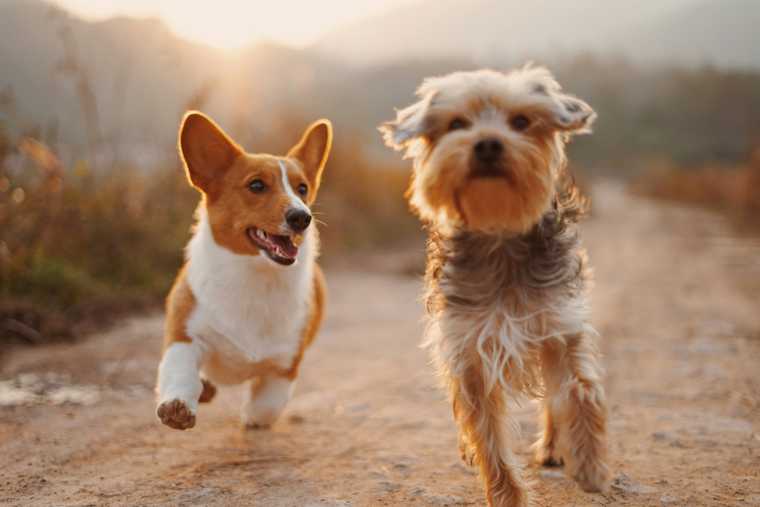
Avoid punishing mistakes and establish a straightforward routine. Learn your pup's potty schedule; you can keep a notebook to track when and how often they go. Consistency is key, so always supervise and take them out at these moments to set them up for success.
Socialization
Socializing your puppy is a fun and essential part of their early development. This special time typically happens between 2.5–3 weeks and 12–16 weeks, peaking around 6–8 weeks. During this period, your pup is eager to soak up new experiences like a sponge.
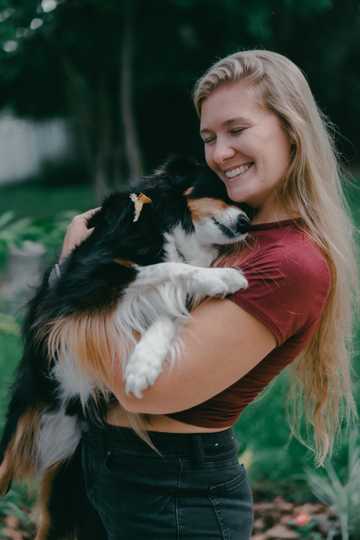
The key is to make these experiences positive and enjoyable. Offer treats, toys, and lots of fuss to create happy associations. This will help your pup grow into a well-adjusted, confident adult canine and reduce the chances of fear-based behaviors like excessive barking.
Note: Separation anxiety is a common problem that pet parents face. Check out our guide on how to help an anxious dog stay home alone.
Basic Obedience Training for Dogs
To solve any behavior problem, you need to think about what is reinforcing that unwanted behavior. Stop reinforcing poor behavior; create and reinforce good habits instead, and think about ways to prevent the behavior from happening.
- If your dog barks excessively whenever they want attention, they’ll keep doing it because you give them attention immediately after they bark.
- If your dog pulls on the leash because they want to get close to an exciting smell, they’ll keep doing that because pulling works.
- If your dog steals food from the counter, they keep doing it because they’ve managed to get food.
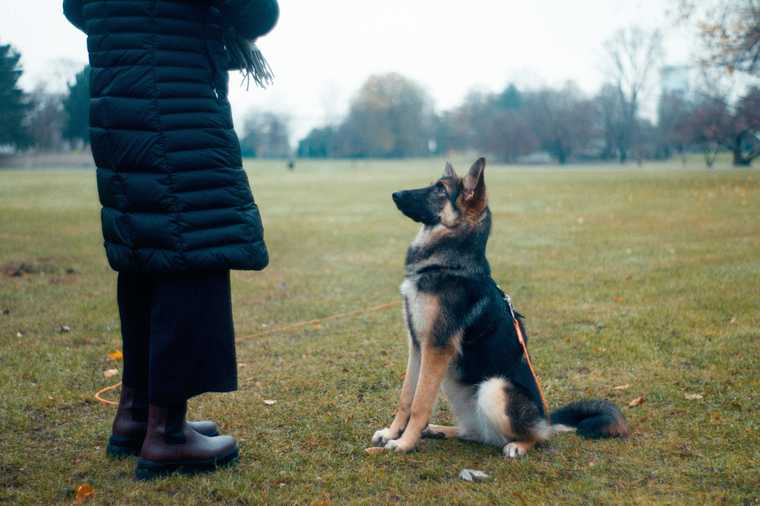
Basic commands
Basic commands (A verbal marker, Name, Look, Come, Sit, Down, Stand, Place, Stay, No, Take It, Drop It, Leave It, Fetch, Heel, Off) are crucial to teaching your pooch the behavior you expect from them. And teaching them is simpler than you think. You can use luring, shaping, capturing, or modeling to get the behavior you want.
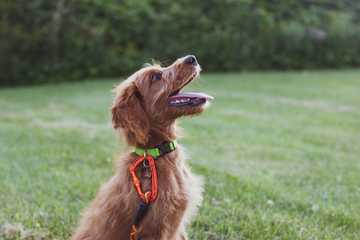
Note: The most common and easiest method is luring. It implies encouraging a pet to follow your guidance using a lure (most often food in hand) and gradually eliminating it by using an empty hand to guide the dog and make them perform the trick on command.
Advanced dog training
An advanced approach is more than teaching commands. It’s a transition from the initial stage of learning new commands to the fluency stage, where you:
- Strive to have no prompts
- Stop reinforcing every time they perform a command (intermittent reinforcement)
- Refine the form
- Increase reaction speed and (if applicable) the speed of commands
- Proof against three parameters: Distraction, Duration, and Distance. This final stage will show you if your dog is responding to your commands in any environment, at any distance, for the time you asked for.
Advanced training example
Suppose you’ve finished the initial stage of teaching the “Sit” command. In that case, you should fade prompting (luring with the hand), then transition to intermittent reinforcement (reinforce only in some trials instead of in all trials), start to reinforce only if the dog responds within one second, or only if they sit right where they were when you requested them, and start training in a place with other dogs, people, or other types of distraction.
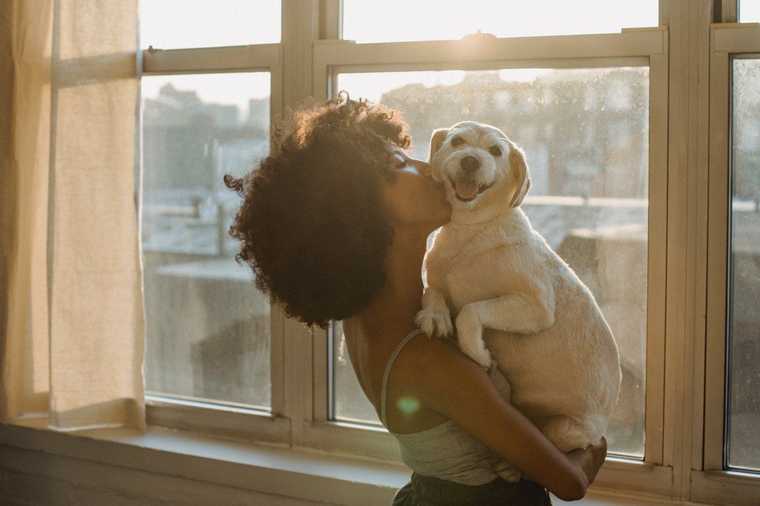
If the fluency stage is done with every command you teach, they will respond to you in every situation, environment, or even when someone else requests them to do it. When you achieve this, the “trained dog” you once dreamed about will be your companion.
Wrap Up
Training your dog basic commands is a way to set healthy boundaries and teach them about the rules of our society. It leads to harmonious and peaceful coexistence between people and canines. Using this dog obedience training guide and punishment-free methods can help you teach your pet new skills effectively, causing no harm to their psychological development.
Remember to stay consistent and keep the learning process fun. Outstanding results are guaranteed!

Passionate team dedicated to help pet owners raise safe and obedient dogs, fostering meaningful connections with their furry companions.

Certified dog trainer, exclusive positive reinforcement methods & tackling aggression problems.